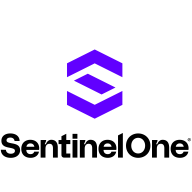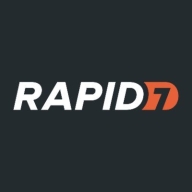


Microsoft Defender for Cloud and Rapid7 InsightCloudSec are key players in cloud security solutions. Microsoft Defender for Cloud leads with its robust integration with Azure, while Rapid7 InsightCloudSec shines with its automation and adaptability across various cloud platforms.
Features: Microsoft Defender for Cloud offers native Azure integration, seamless end-to-end management, and advanced threat protection, benefiting Azure-reliant organizations. Rapid7 InsightCloudSec impresses with its multi-cloud visibility, strong automation, and compliance management features, making it apt for diverse cloud environments.
Room for Improvement: Microsoft Defender for Cloud could enhance its multi-cloud compatibility, improve third-party tool integration, and offer more transparent pricing. Rapid7 InsightCloudSec could expand its integration library, improve its user interface, and enhance ease of onboarding to simplify initial usage.
Ease of Deployment and Customer Service: Microsoft Defender for Cloud is easy to deploy for Azure users, leveraging Microsoft's ecosystem for streamlined support. Rapid7 InsightCloudSec provides flexible deployment options across different cloud environments, with a strong focus on dedicated customer support channels for assistance.
Pricing and ROI: For existing Azure users, Microsoft Defender for Cloud offers cost efficiency and a good return on investment due to integrated services. Rapid7 InsightCloudSec, despite higher upfront costs, provides substantial ROI through its feature-rich offerings and adaptability to complex, multi-cloud architectures.
| Product | Market Share (%) |
|---|---|
| SentinelOne Singularity Cloud Security | 3.6% |
| Microsoft Defender for Cloud | 9.3% |
| Rapid7 InsightCloudSec | 1.6% |
| Other | 85.5% |



| Company Size | Count |
|---|---|
| Small Business | 46 |
| Midsize Enterprise | 20 |
| Large Enterprise | 53 |
| Company Size | Count |
|---|---|
| Small Business | 26 |
| Midsize Enterprise | 7 |
| Large Enterprise | 45 |
SentinelOne Singularity Cloud Security offers a streamlined approach to cloud security with intuitive operation and strong integration capabilities for heightened threat detection and remediation efficiency.
Singularity Cloud Security stands out for its real-time detection and response, effectively minimizing detection and remediation timelines. Its automated remediation integrates smoothly with third-party tools enhancing operational efficiency. The comprehensive console ensures visibility and support for forensic investigations. Seamless platform integration and robust support for innovation are notable advantages. Areas for development include improved search functionality, affordability, better firewall capabilities for remote users, stable agents, comprehensive reporting, and efficient third-party integrations. Clarity in the interface, responsive support, and real-time alerting need enhancement, with a call for more automation and customization. Better scalability and cost-effective integration without compromising capabilities are desired.
What are SentinelOne Singularity Cloud Security's standout features?SentinelOne Singularity Cloud Security is deployed in industries needing robust cloud security posture management, endpoint protection, and threat hunting. Utilized frequently across AWS and Azure, it assists in monitoring, threat detection, and maintaining compliance in diverse environments while providing real-time alerts and recommendations for proactive threat management.
Microsoft Defender for Cloud is a comprehensive security solution that provides advanced threat protection for cloud workloads. It offers real-time visibility into the security posture of cloud environments, enabling organizations to quickly identify and respond to potential threats. With its advanced machine learning capabilities, Microsoft Defender for Cloud can detect and block sophisticated attacks, including zero-day exploits and fileless malware.
The solution also provides automated remediation capabilities, allowing security teams to quickly and easily respond to security incidents. With Microsoft Defender for Cloud, organizations can ensure the security and compliance of their cloud workloads, while reducing the burden on their security teams.
Rapid7 InsightCloudSec is a comprehensive CSPM tool catering to cloud security across Docker and Kubernetes workloads, ensuring rigorous data classification and protection, focusing on AWS and Azure platforms.
Organizations leverage Rapid7 InsightCloudSec for securing cloud environments, integrating smoothly into Kubernetes settings for extensive security oversight. This tool addresses data protection with governance and access controls, providing centralized visibility and alert mechanisms. Users depend on its threat detection capabilities, easing data security management on AWS and Azure. The platform integrates automated processes and agentless scanning to foster an understanding of cloud security dynamics. Enhancements in CNAPP management and more intuitive interfaces could further streamline its use.
What are the most important features of Rapid7 InsightCloudSec?In financial sectors, Rapid7 InsightCloudSec is critical for safeguarding sensitive information and ensuring compliance. Healthcare industries use it to protect patient data, adhering to strict regulatory standards. E-commerce businesses appreciate its ability to secure transaction data while maintaining service availability through reliable threat detection and mitigation strategies.
We monitor all Cloud Security Posture Management (CSPM) reviews to prevent fraudulent reviews and keep review quality high. We do not post reviews by company employees or direct competitors. We validate each review for authenticity via cross-reference with LinkedIn, and personal follow-up with the reviewer when necessary.